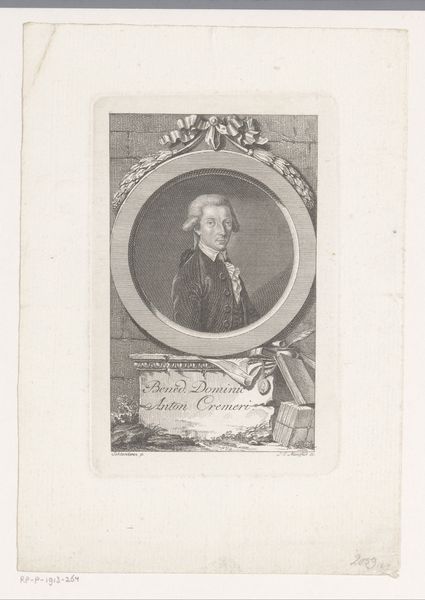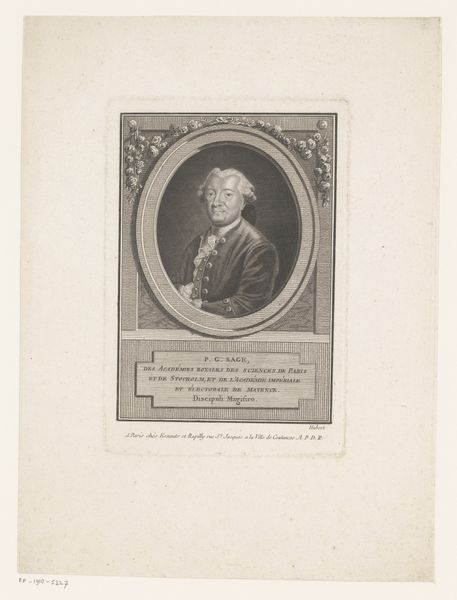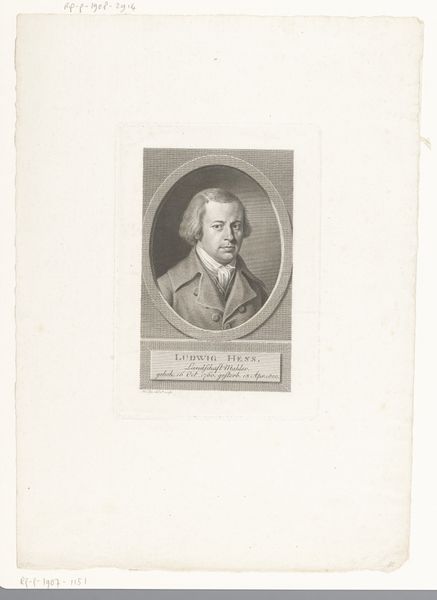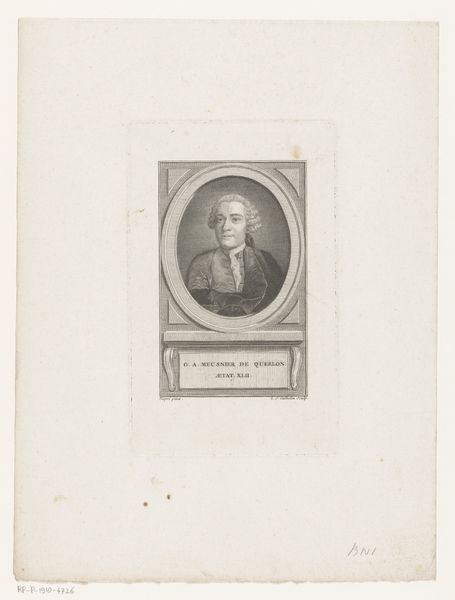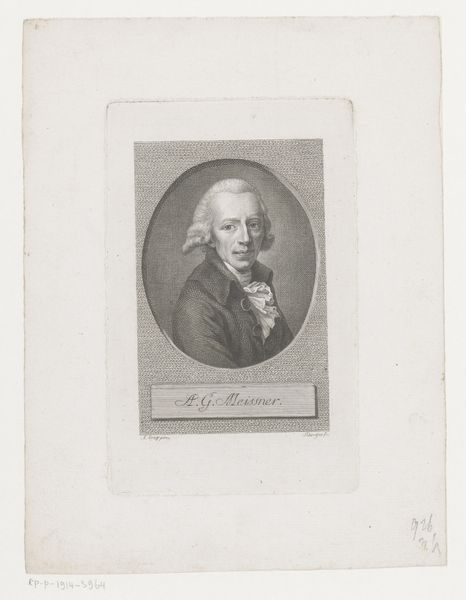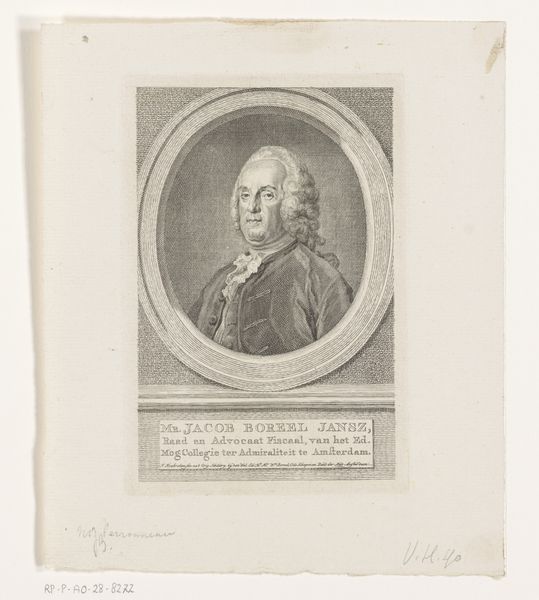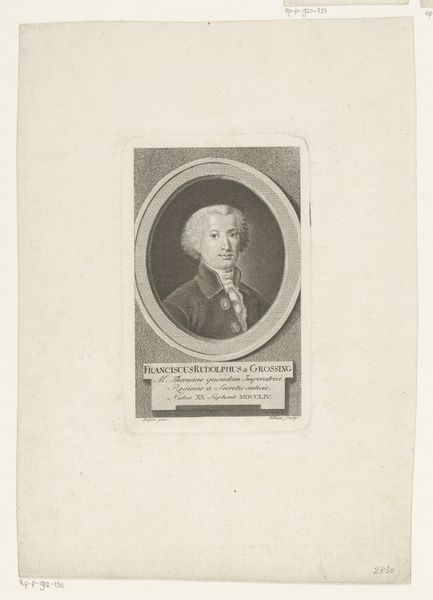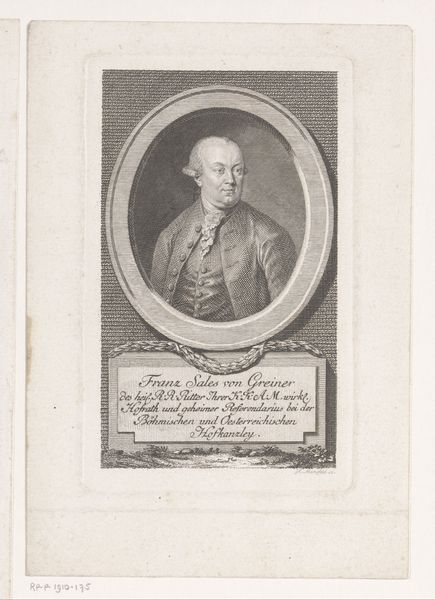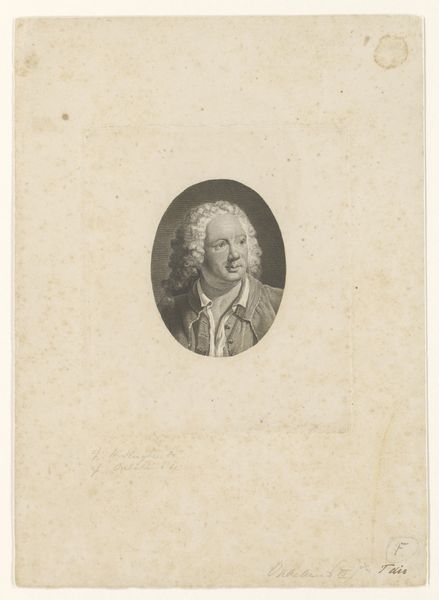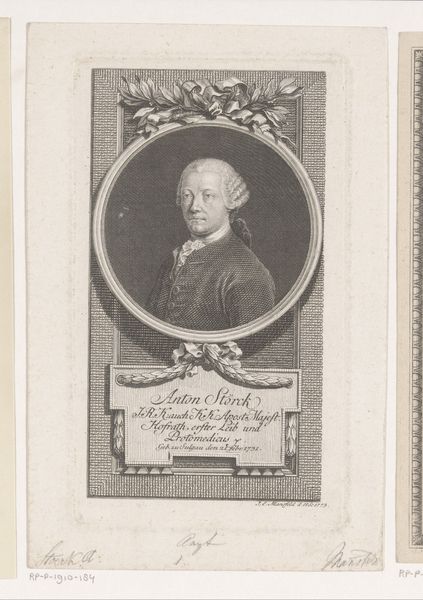
Dimensions: height 225 mm, width 174 mm
Copyright: Rijks Museum: Open Domain
Editor: This is a print from 1775, "Portret van Balthazar Georges Sage," made by Antoine de Marcenay de Ghuy. It's an engraving, and quite formal. What I find striking is how the oval portrait is framed, almost like a stage set. What can you tell me about its historical context? Curator: That staged effect is key, isn’t it? Think about the power structures in place at the time. Sage was a member of prestigious academies; this portrait, reproduced as a print, becomes a form of public pronouncement about his status and intellectual authority. The very act of commissioning and disseminating this image reinforces social hierarchies. Do you notice any visual elements supporting this idea? Editor: I see the laurel wreath above the portrait, signifying achievement. And aren't those globes at the base, representing his knowledge and reach? It's like a visual resume, making claims about Sage’s intellectual properties to elevate his societal position. Curator: Exactly! The Baroque style, with its ornamentation and drama, served the function of displaying power. Consider the role of art in the burgeoning scientific community too. Images like this weren't just decoration. They were integral to shaping reputations and promoting scientific figures and their institutions. How do you think the printing process affected this? Editor: Making it reproducible emphasizes its importance. This isn't just a single painting for a private collection; this is meant to be disseminated, solidifying Sage's image on a broader scale. It’s interesting how art becomes a tool for both personal and institutional promotion. Curator: Precisely! And thinking about who controlled these printing presses and distribution networks also reveals underlying social dynamics and power relations within the art world itself. I find these social readings very fruitful. Editor: I agree; I never would have considered the extent of the politics involved. Looking at art through the lens of historical context definitely sheds a new light on the art itself. Curator: Absolutely. The seemingly straightforward image reveals intricate webs of power, patronage, and public persona.
Comments
No comments
Be the first to comment and join the conversation on the ultimate creative platform.
